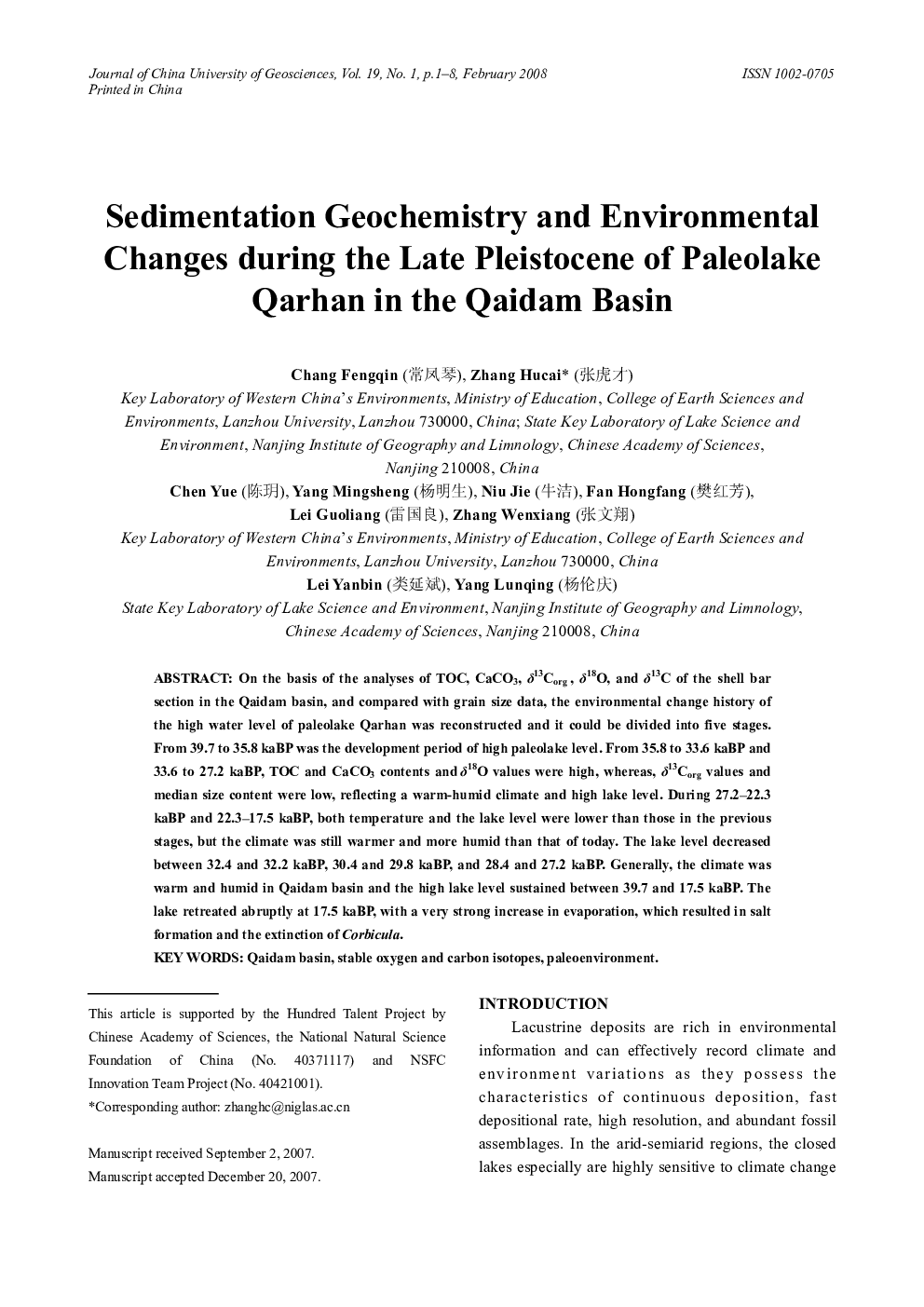| Article ID | Journal | Published Year | Pages | File Type |
|---|---|---|---|---|
| 4687749 | Journal of China University of Geosciences | 2008 | 8 Pages |
Abstract
On the basis of the analyses of TOC, CaCO3, δ13Corg, δ18O, and δ13C of the shell bar section in the Qaidam basin, and compared with grain size data, the environmental change history of the high water level of paleolake Qarhan was reconstructed and it could be divided into five stages. From 39.7 to 35.8 kaBP was the development period of high paleolake level. From 35.8 to 33.6 kaBP and 33.6 to 27.2 kaBP, TOC and CaCO3 contents and δ18O values were high, whereas, δ13Corg values and median size content were low, reflecting a warm-humid climate and high lake level. During 27.2-22.3 kaBP and 22.3-17.5 kaBP, both temperature and the lake level were lower than those in the previous stages, but the climate was still warmer and more humid than that of today. The lake level decreased between 32.4 and 32.2 kaBP, 30.4 and 29.8 kaBP, and 28.4 and 27.2 kaBP. Generally, the climate was warm and humid in Qaidam basin and the high lake level sustained between 39.7 and 17.5 kaBP. The lake retreated abruptly at 17.5 kaBP, with a very strong increase in evaporation, which resulted in salt formation and the extinction of Corbicula.
Related Topics
Physical Sciences and Engineering
Earth and Planetary Sciences
Earth-Surface Processes
Authors
Chang Fengqin, Zhang Hucai, Chen Yue, Yang Mingsheng, Niu Jie, Fan Hongfang, Lei Guoliang, Zhang Wenxiang, Lei Yanbin, Yang Lunqing,
